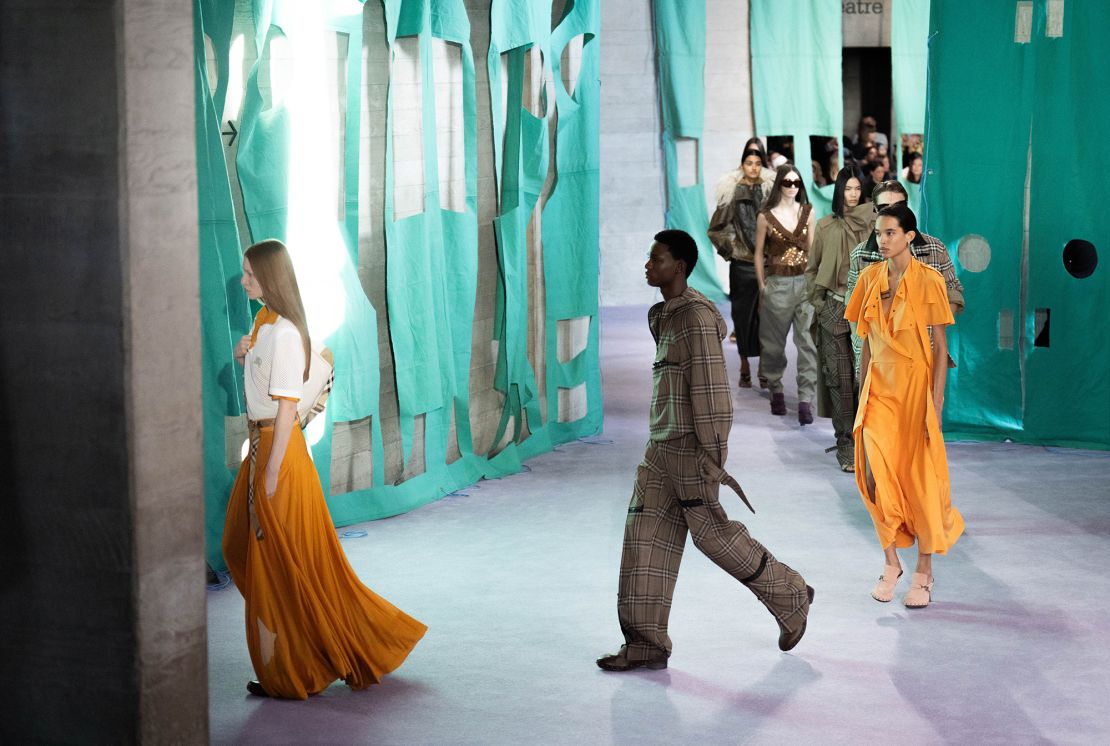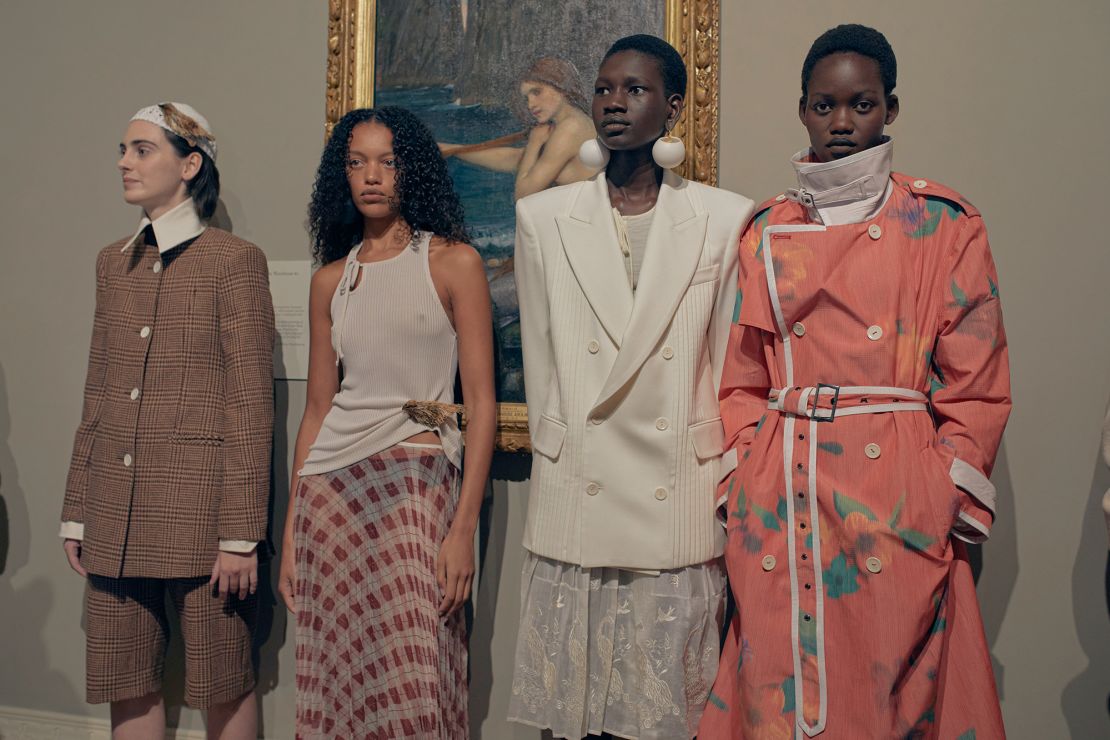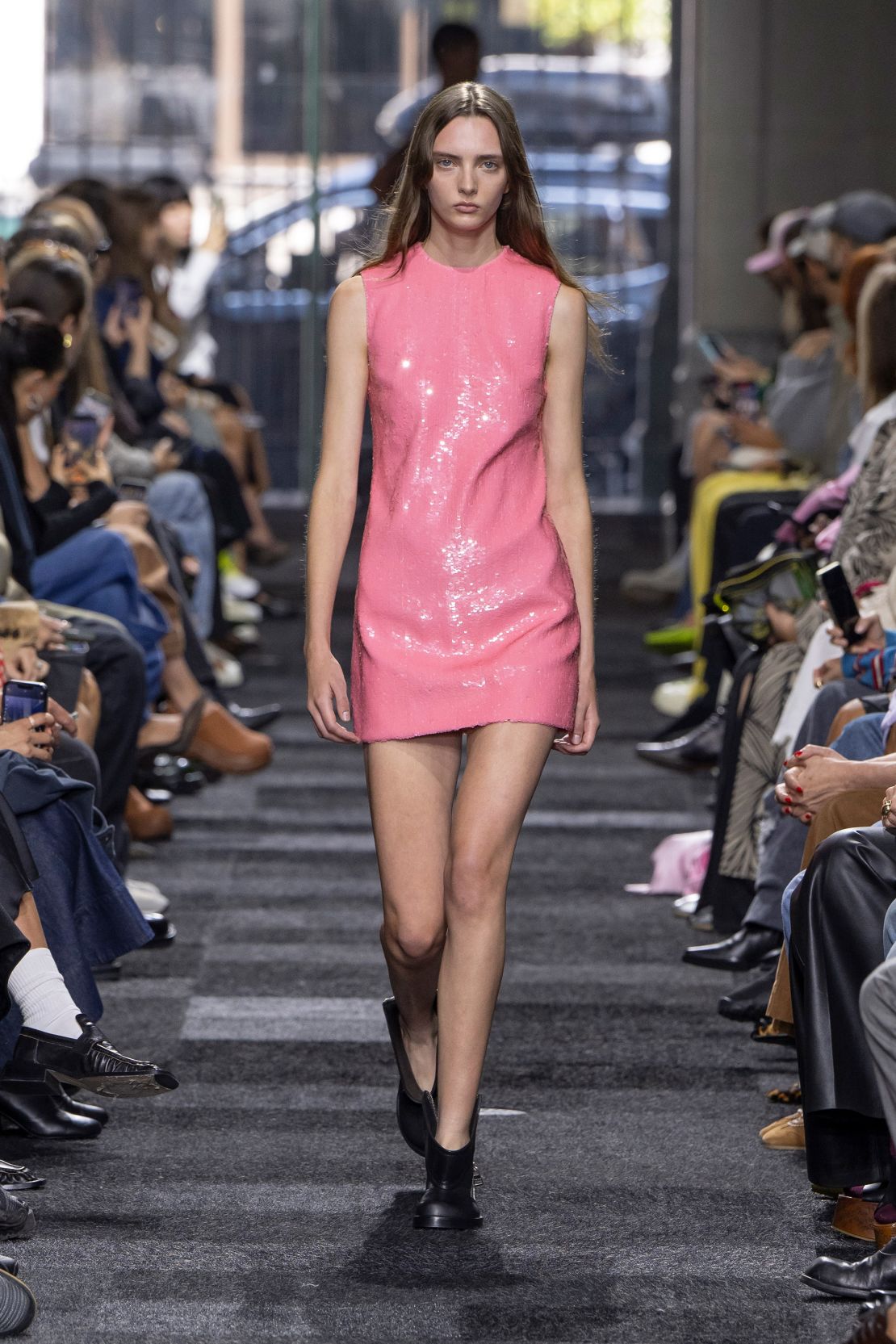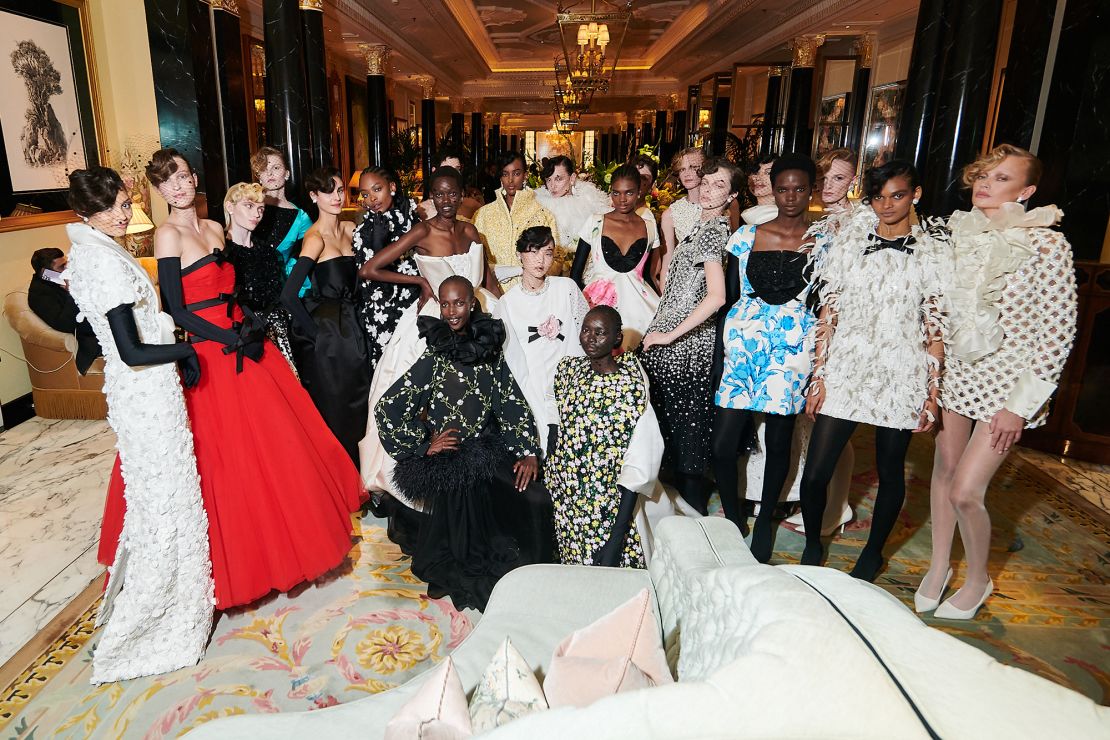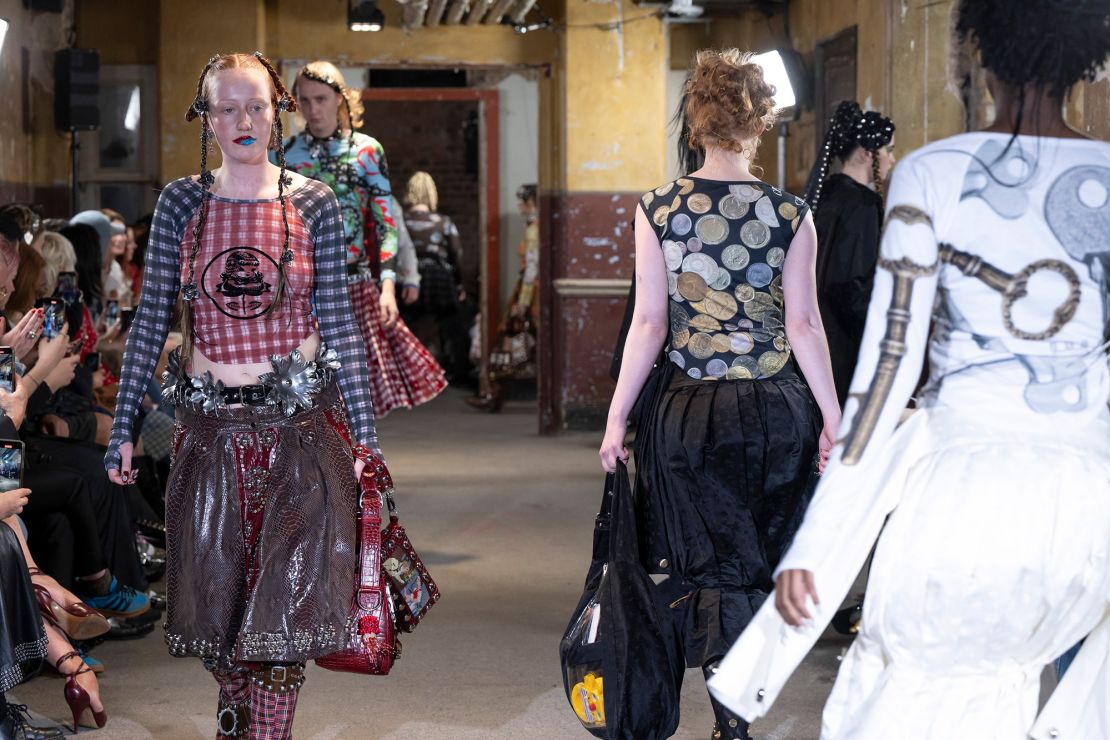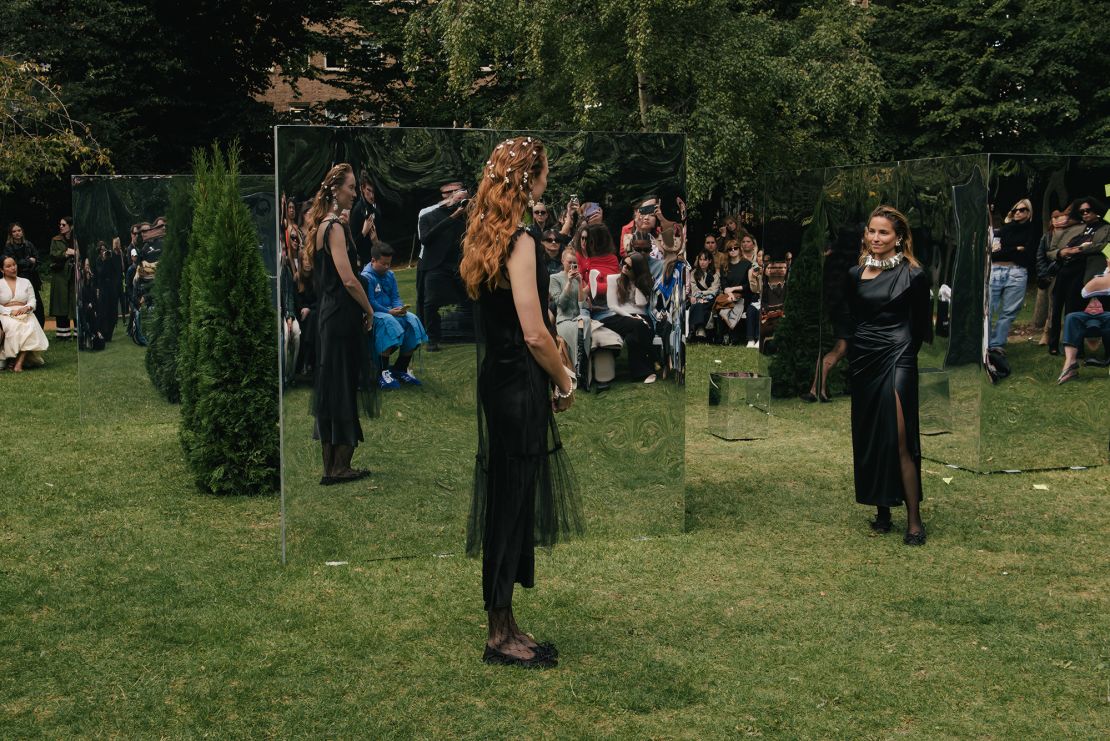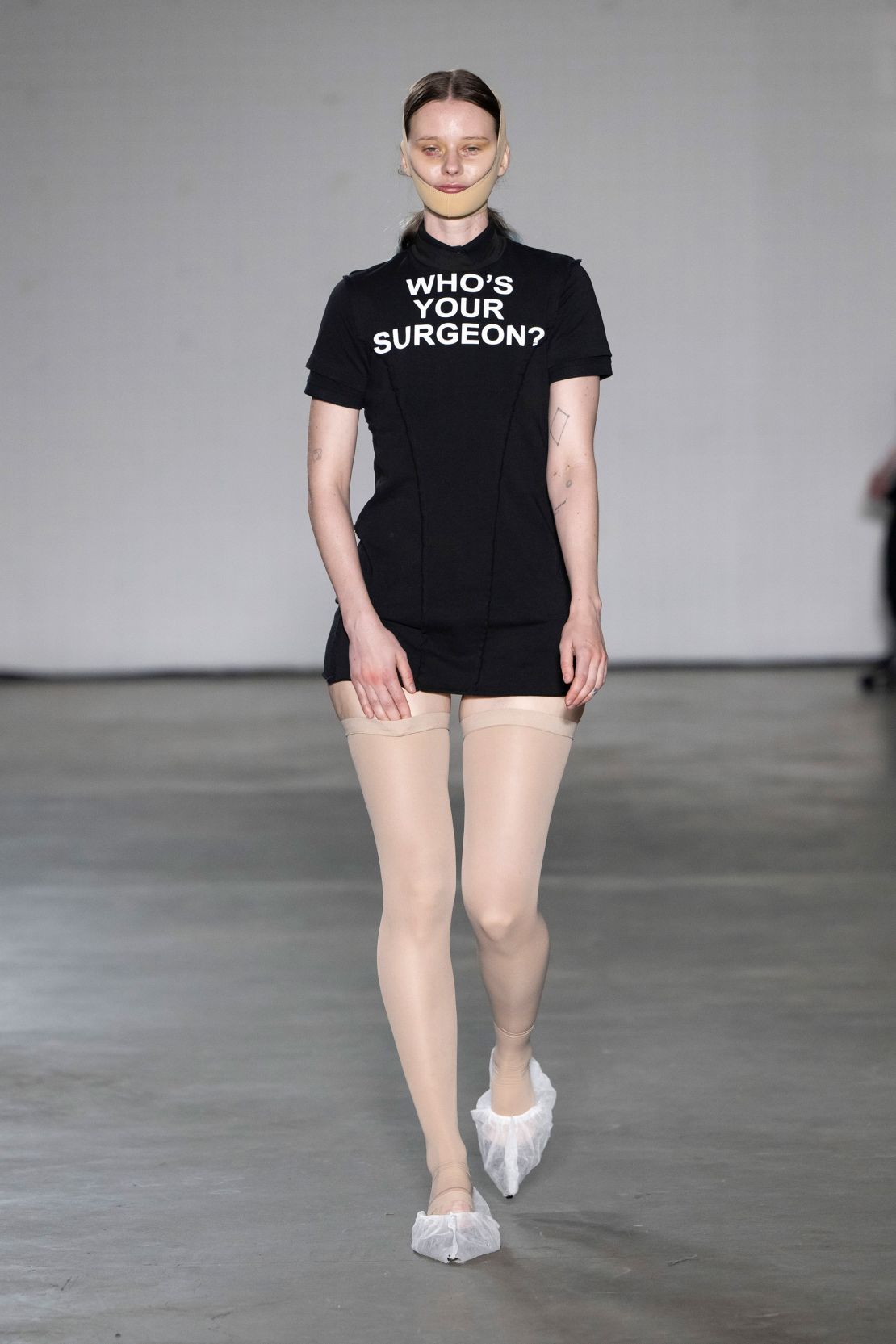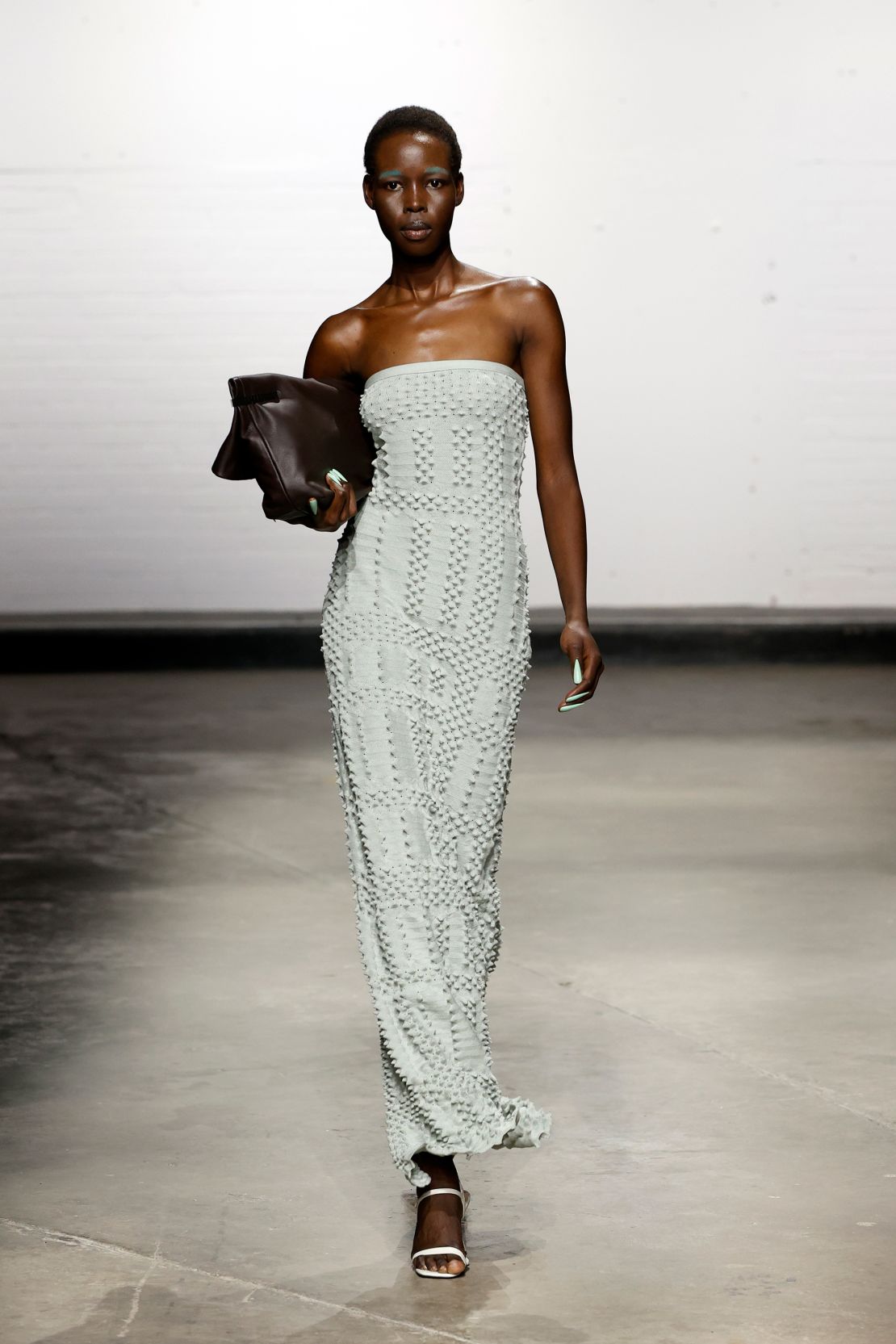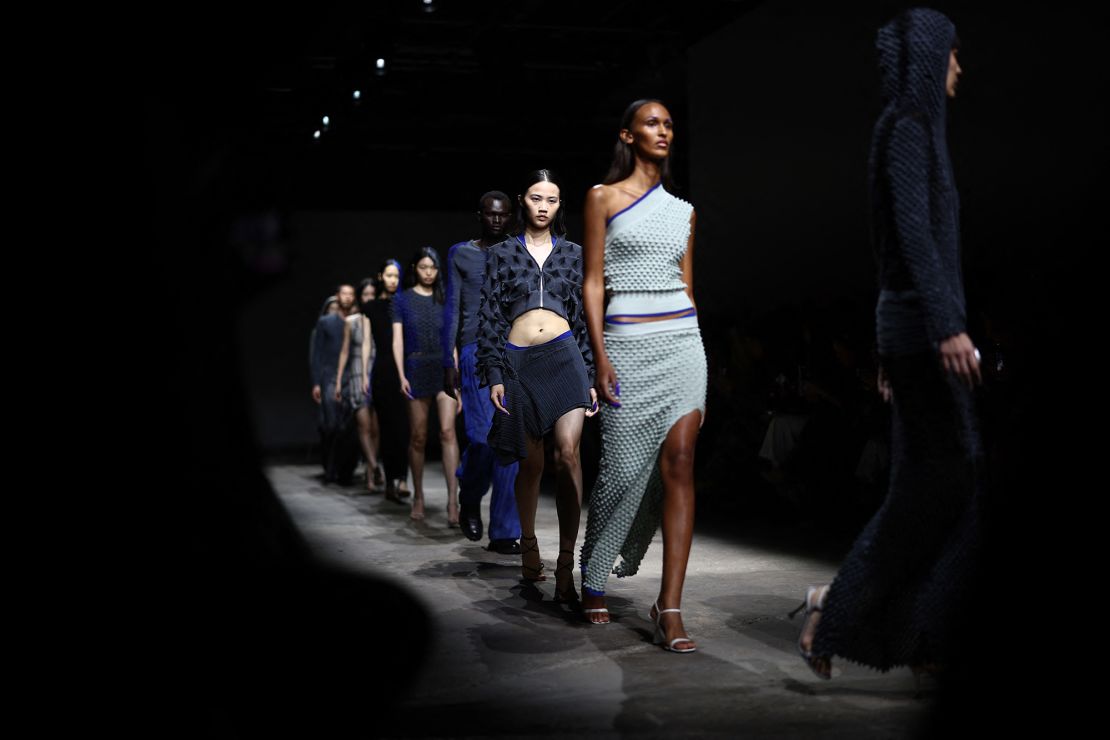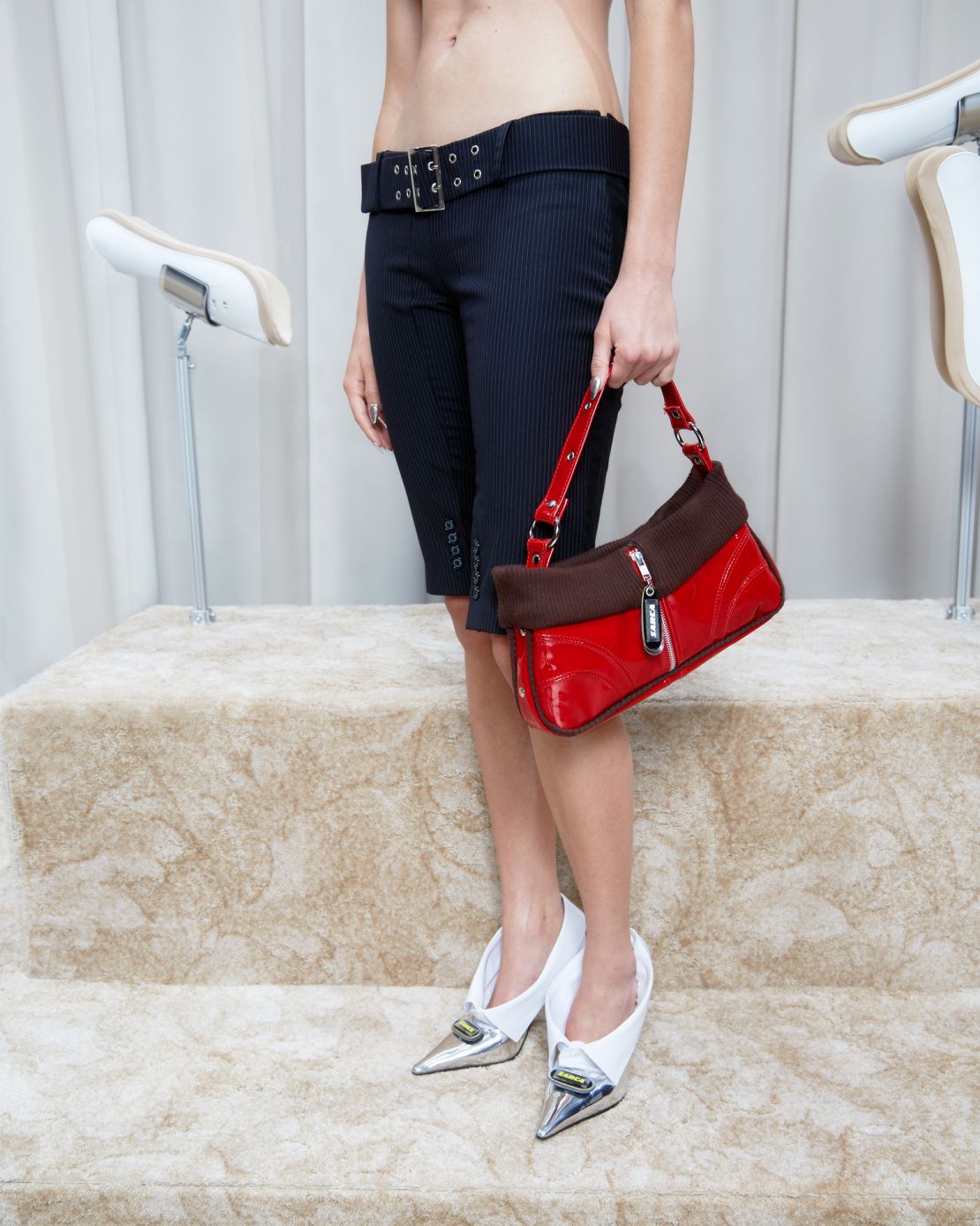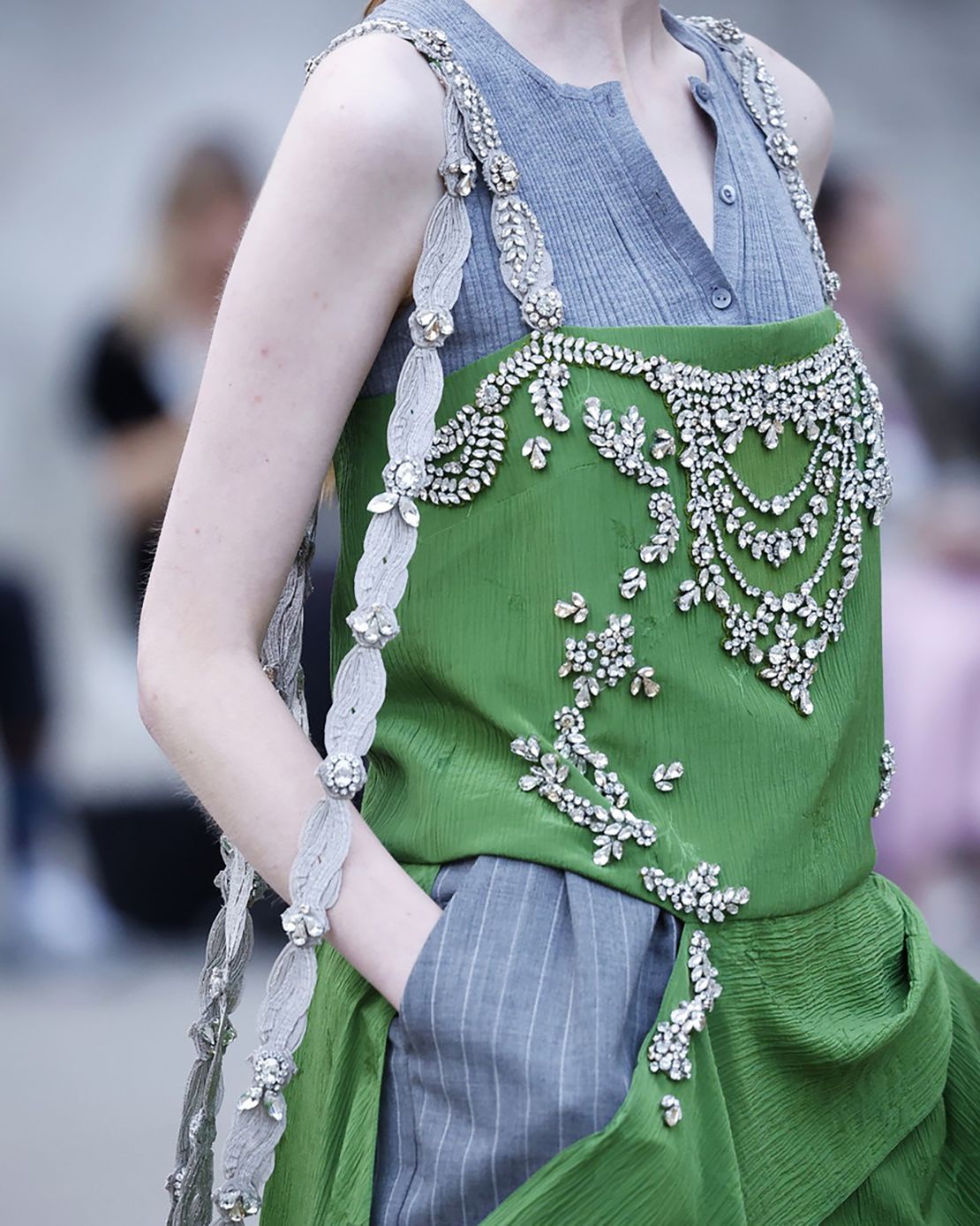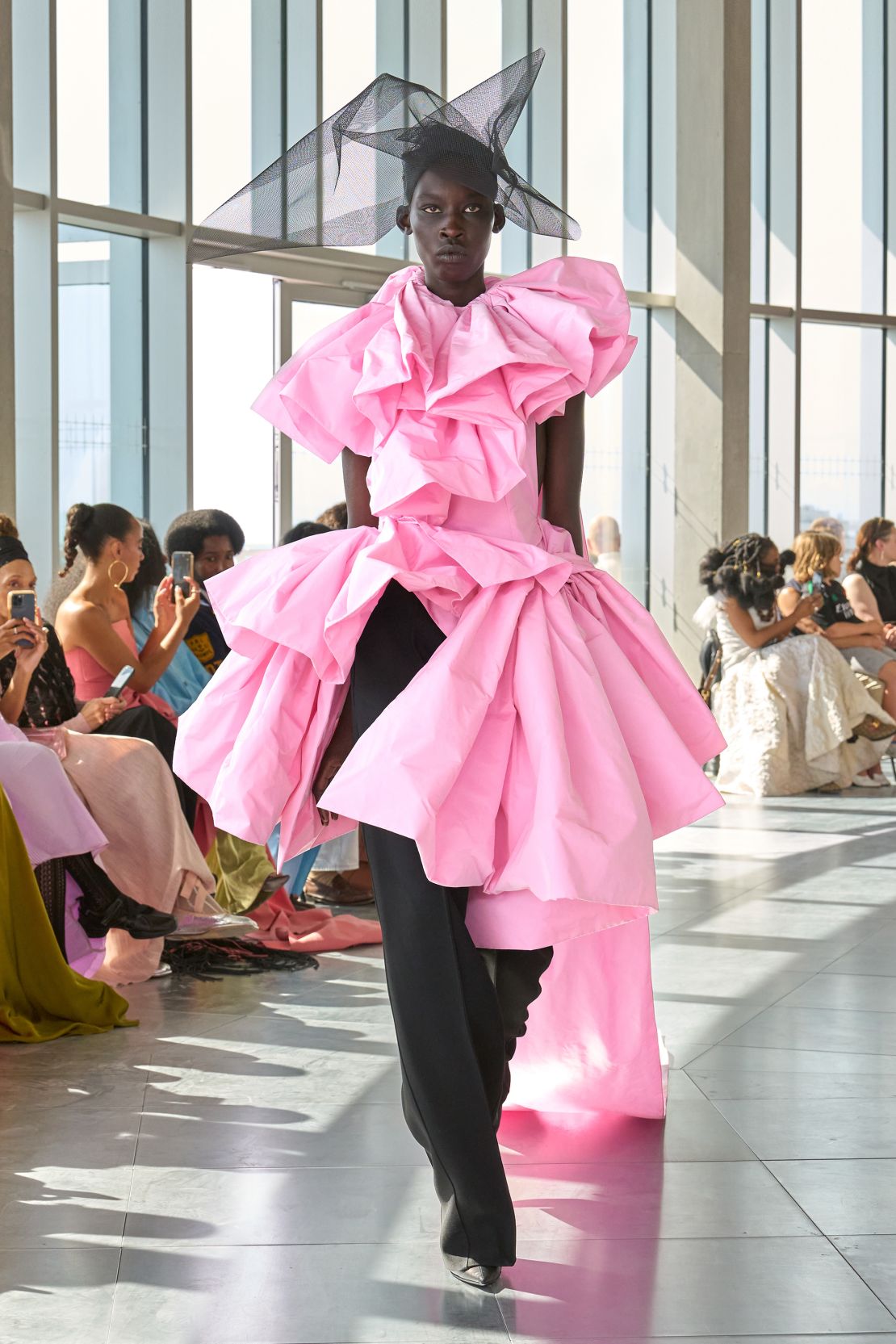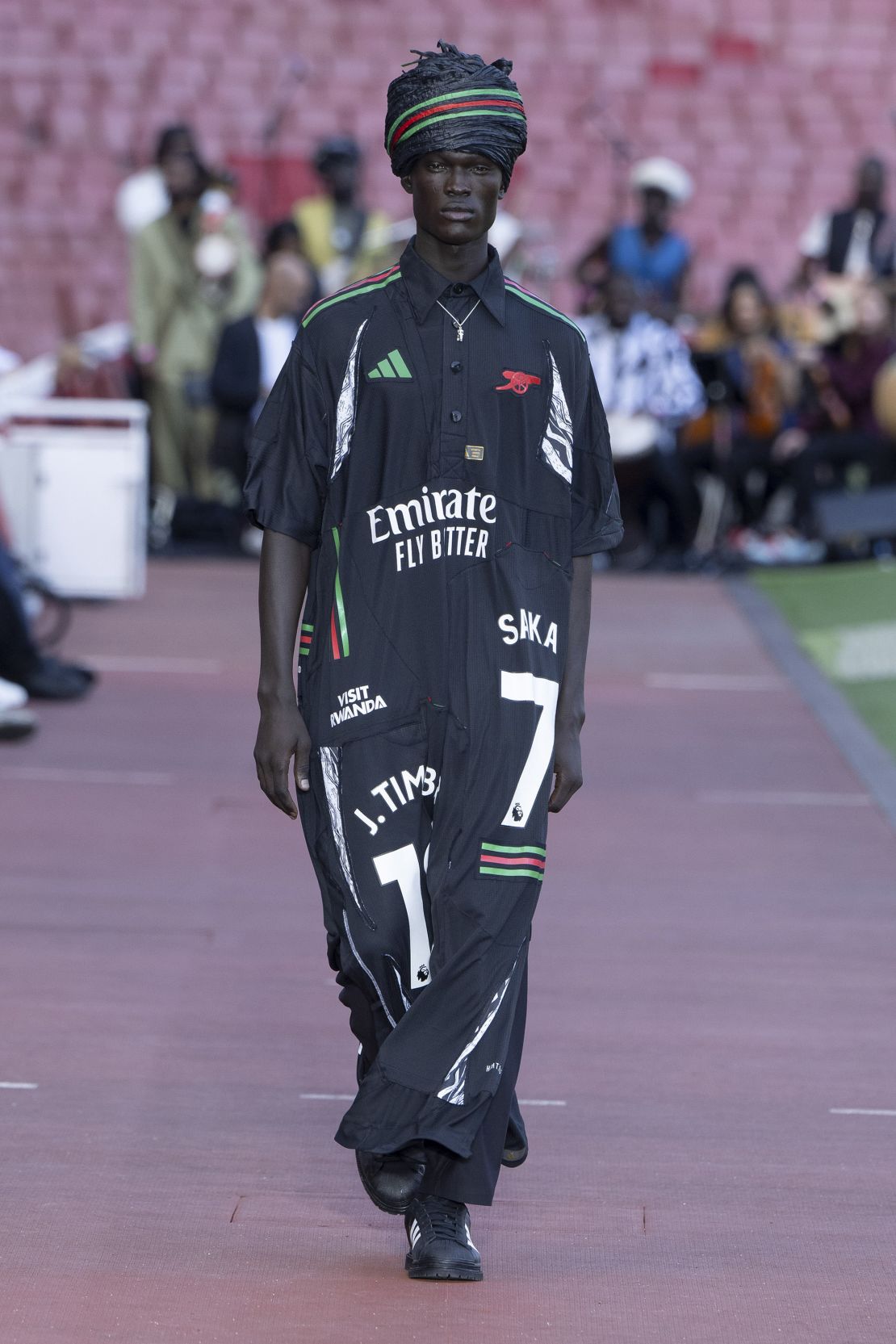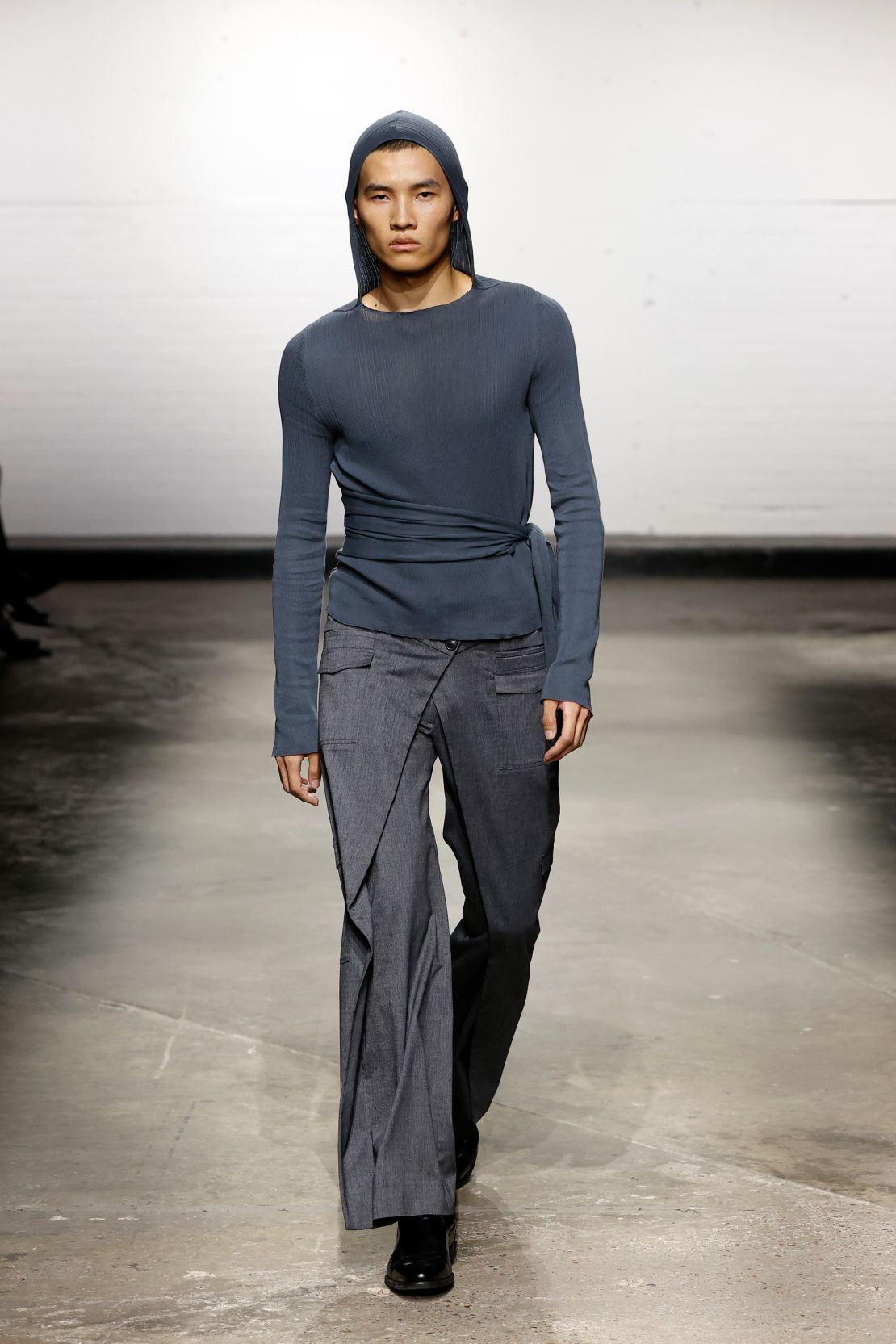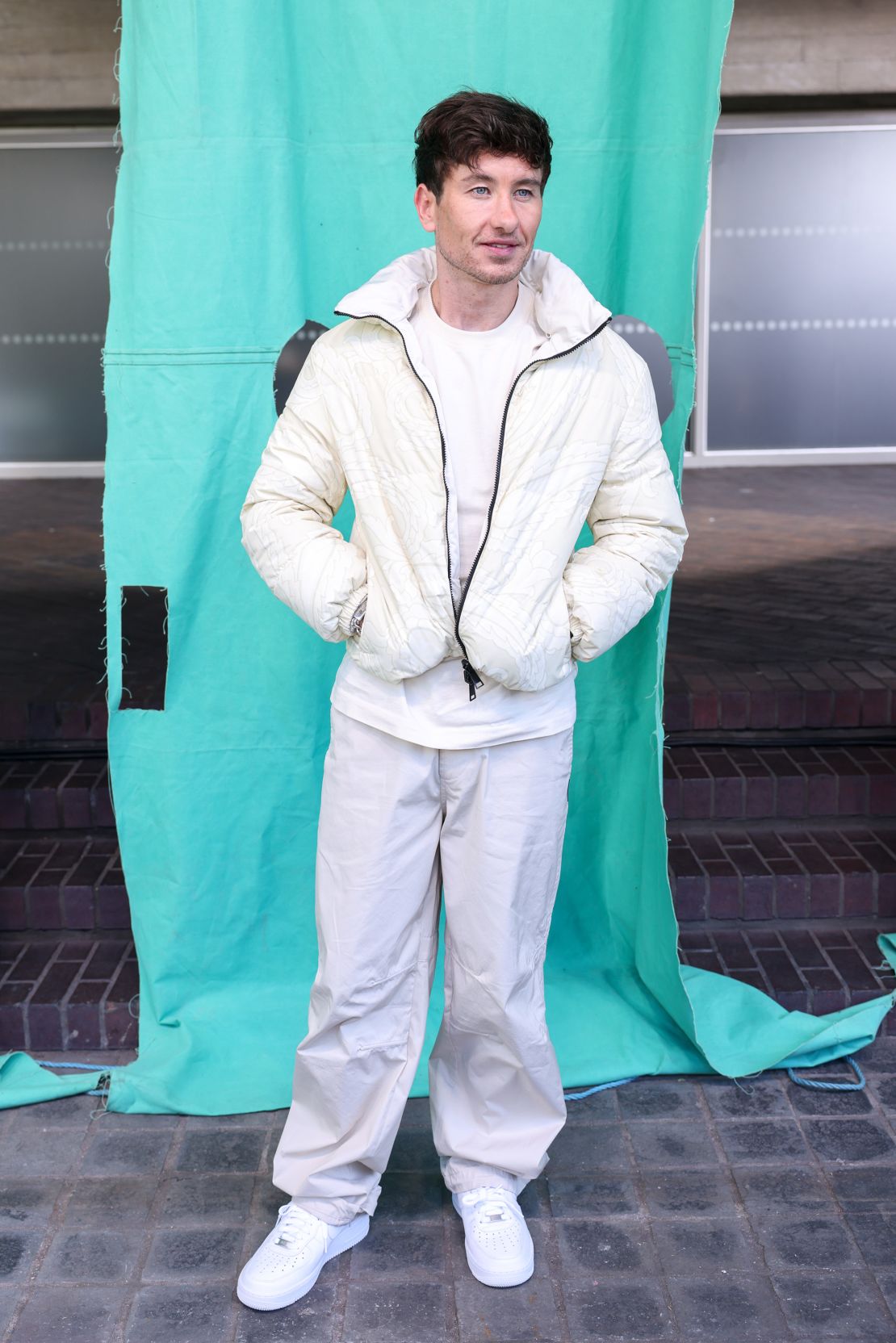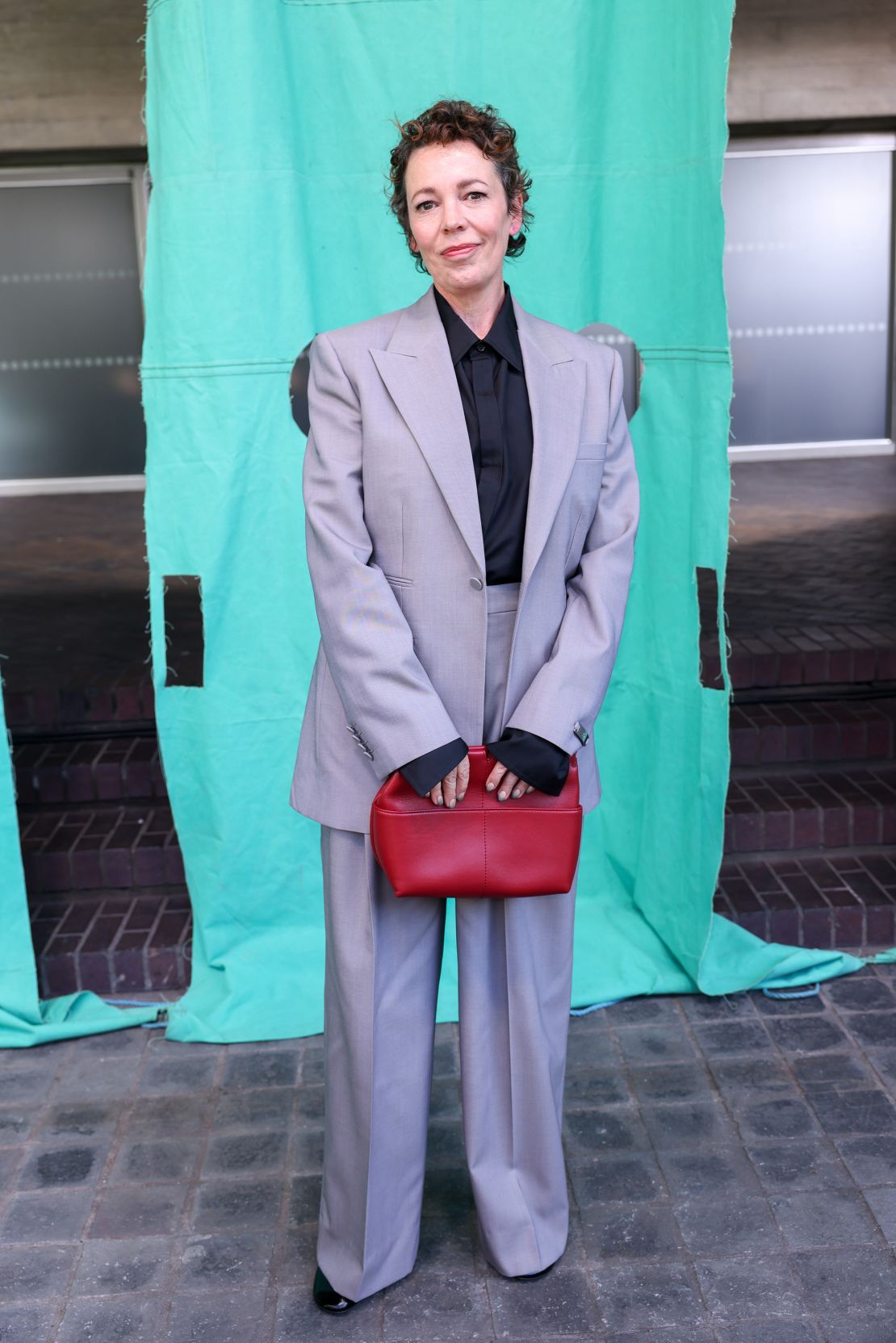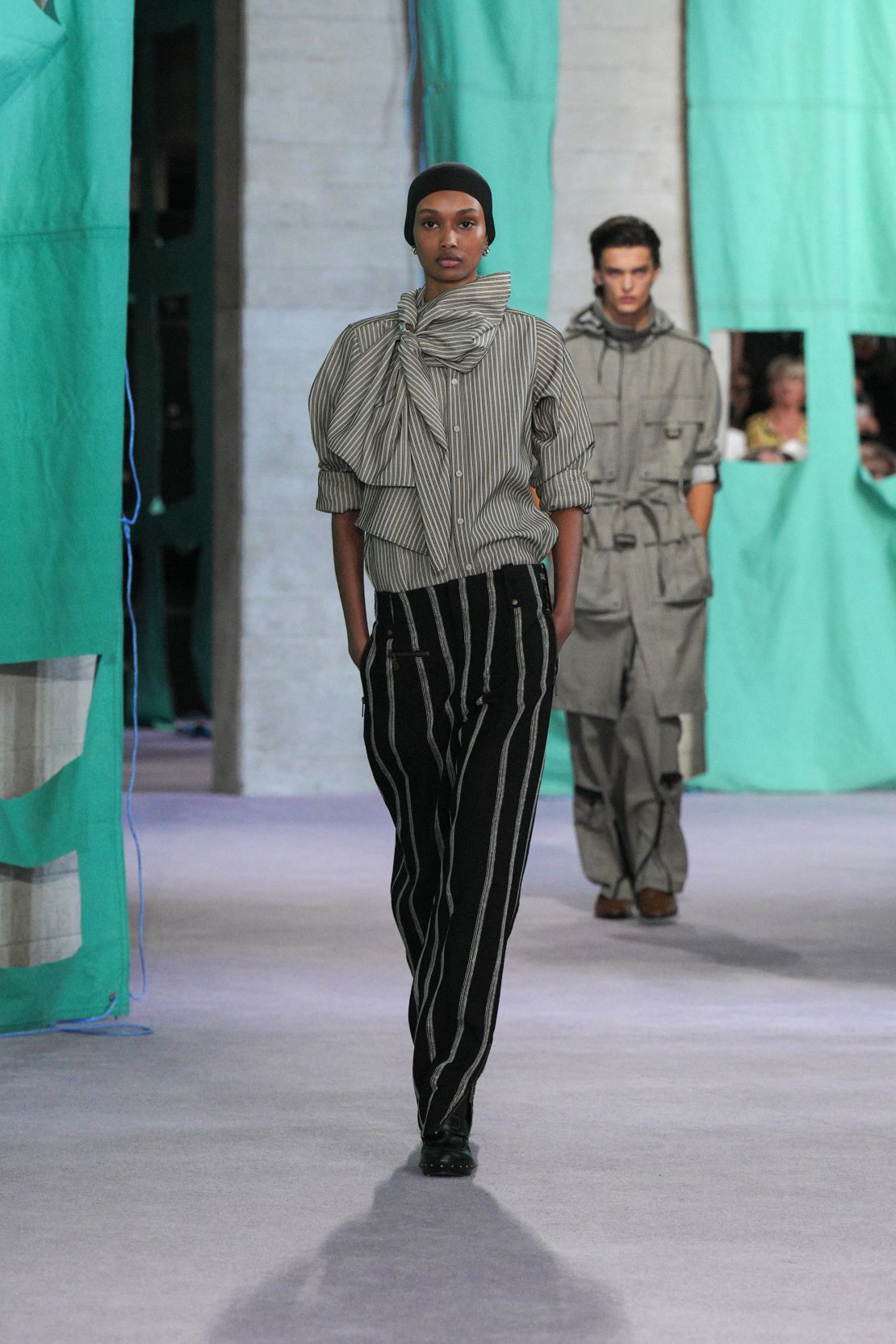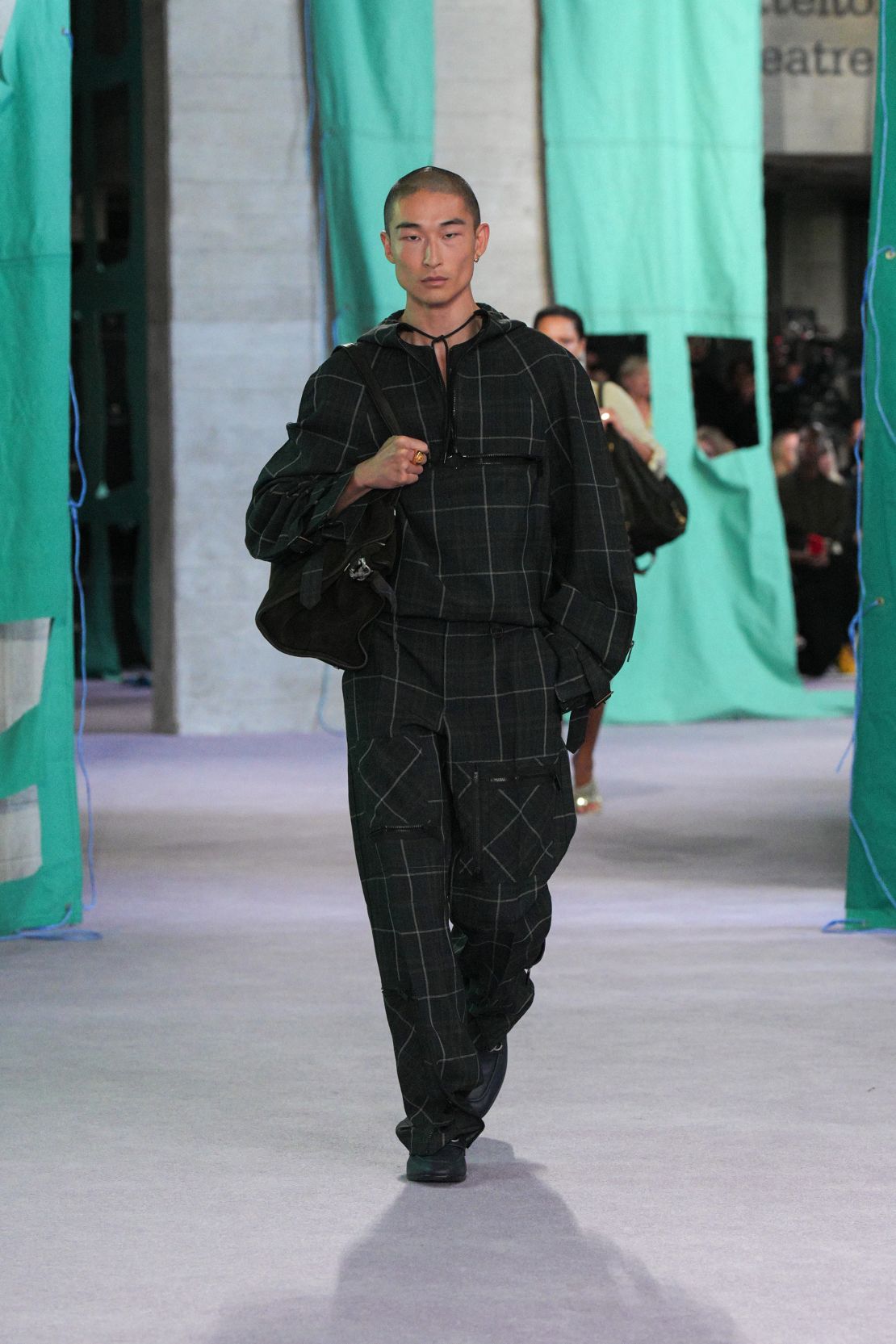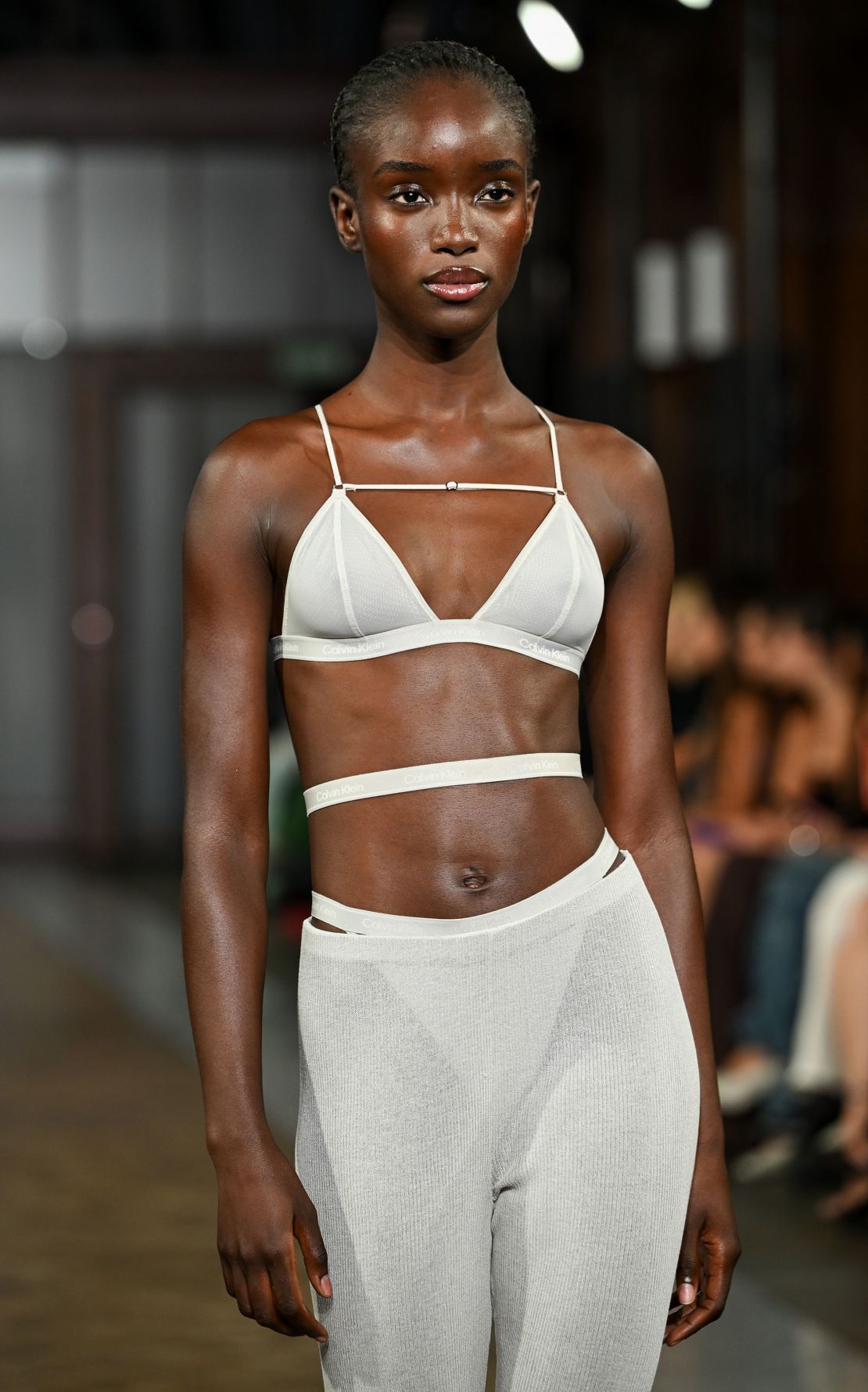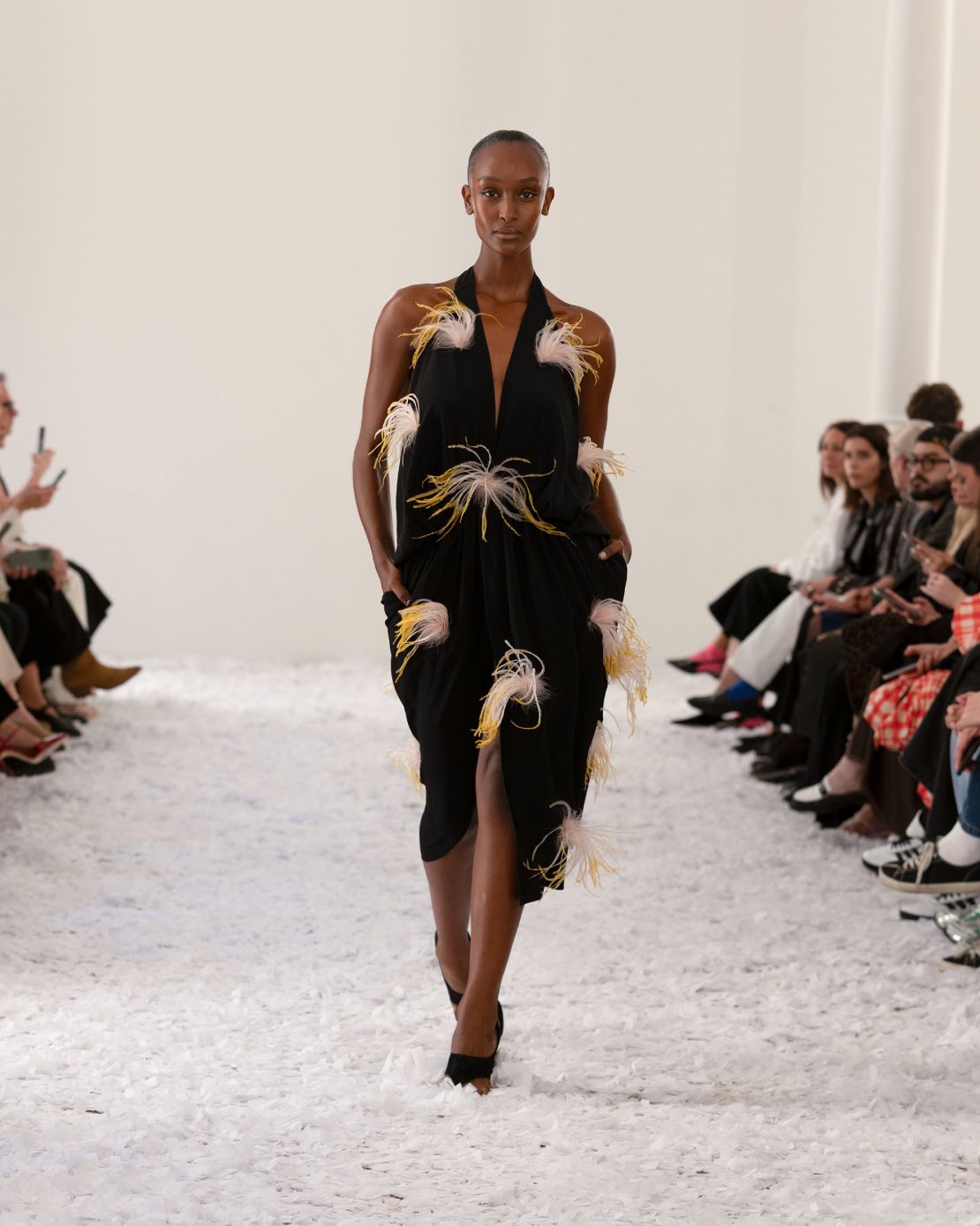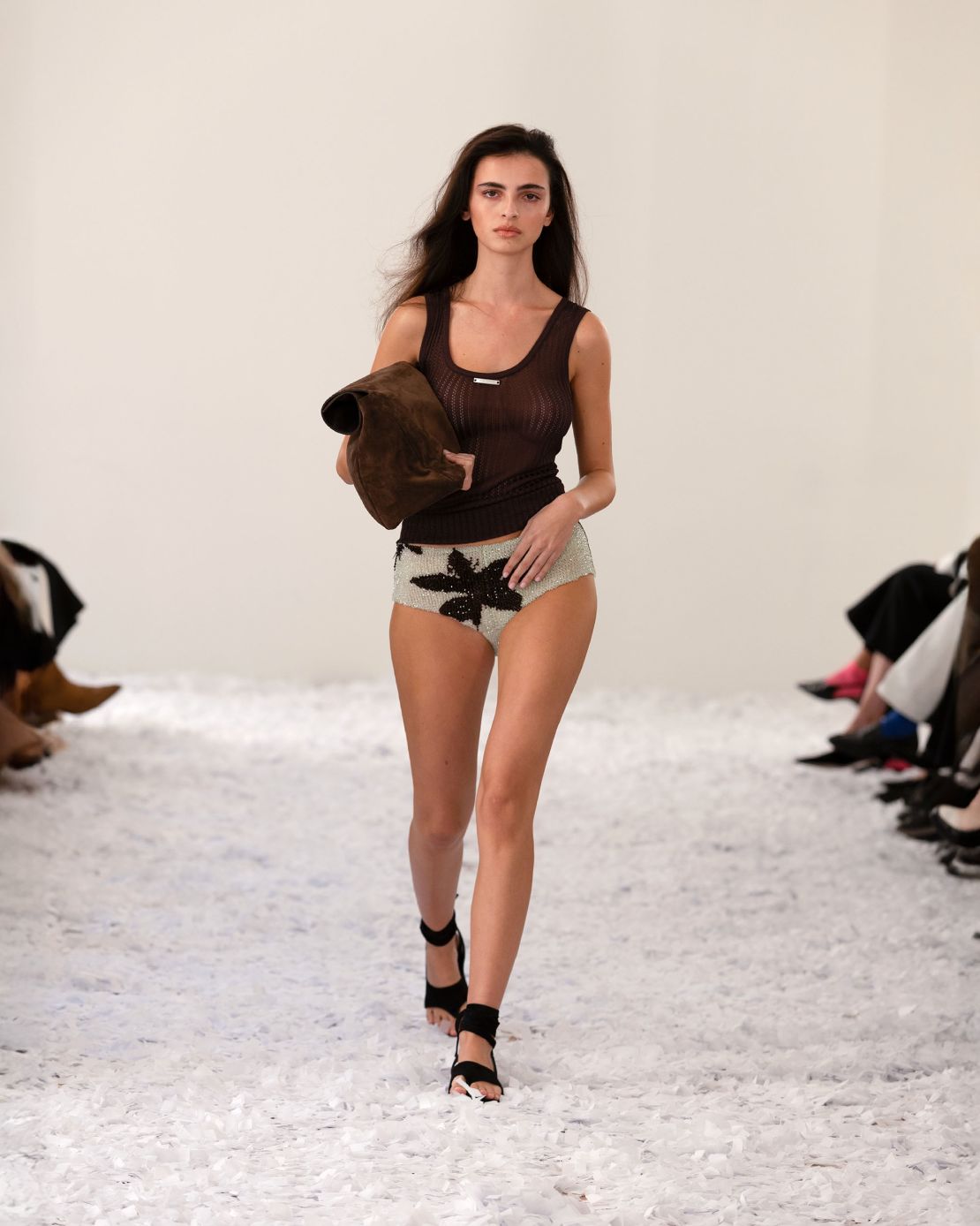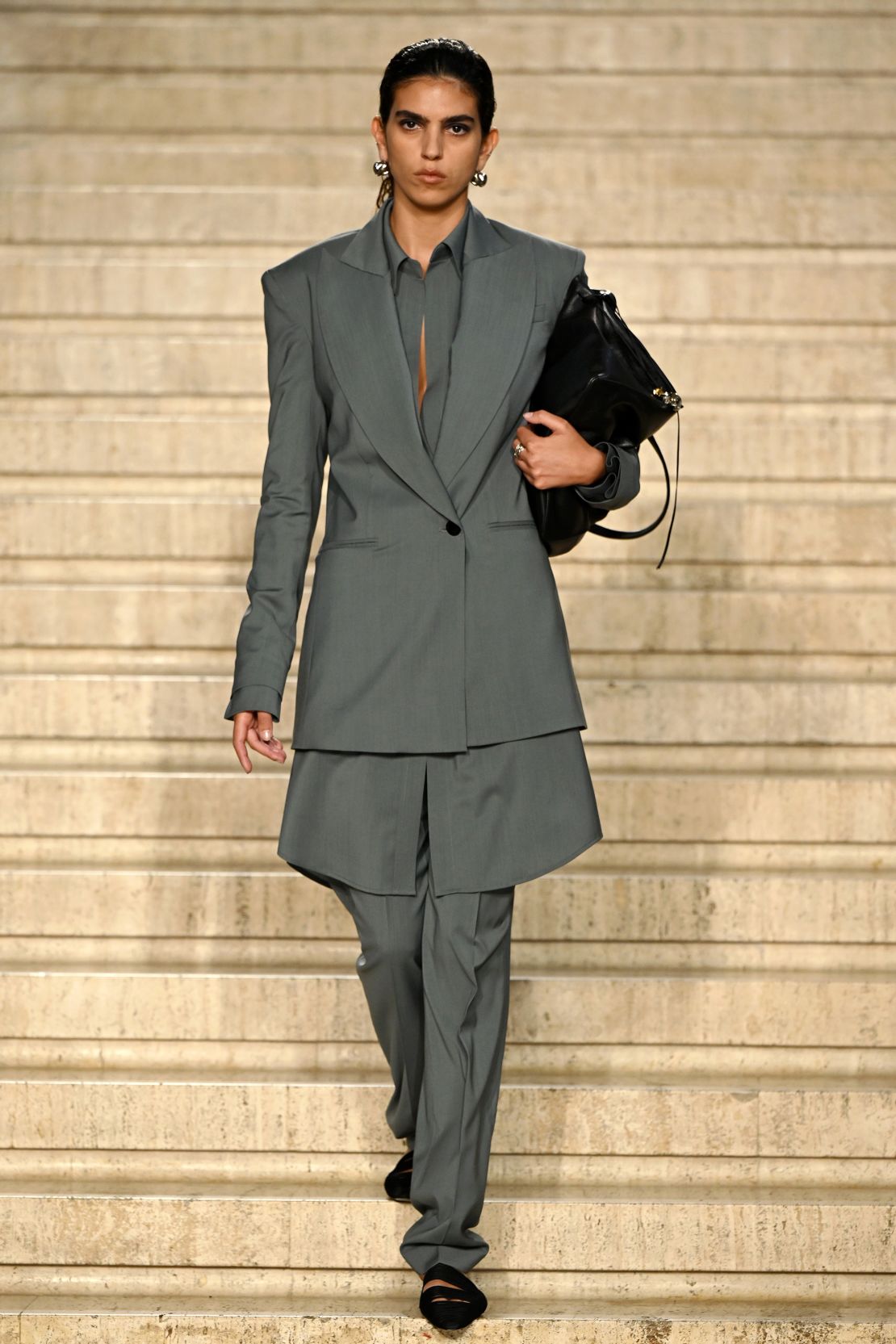Against the backdrop of a challenging economic outlook for many brands — big and small — the 40th anniversary of London Fashion Week last week was certainly a time for reflection.
Jonathan Anderson, who has been showing his eponymous label JW Anderson on the schedule for 15 years believes all fashion weeks are going through what he called a “transitory” period, noting during a post-show interview with press that challenging times can also present opportunities: “In a weird way, I think the economic climate is going to help a bit to focus on actually why we have fashion weeks,” he said. “What they’re about and what people are trying to say.”
While Anderson confirmed he has no plans to leave London, the rest of the schedule has been in a state of flux. Over the last few seasons, a number of designers — from established names like Victoria Beckham to cult labels such as Dilara Findikoglu — have chosen to show elsewhere. Some, including former British mainstay Christopher Kane and American designer Halpern, have shuttered altogether. Molly Goddard, a favorite of London’s style set, opted out this season. As did Rejina Pyo, who hasn’t been on the schedule since February 2022. David Koma pulled out weeks ahead of the event, choosing to invest in campaigns instead.
There were, however, some notable comebacks to the UK capital. S.S. Daley, the youngest designer on the schedule and newly minted winner of the Queen Elizabeth II prize, returned to London for the first time since February 2023. Daley didn’t just bring with him industry accolades, but a celebrity-filled front row – with appearances from Harry Styles, Anna Wintour and The Crown actor Emma Corrin. Nensi Dojaka, winner of the LVMH Prize in 2021, similarly reinstated herself as a key schedule fixture after 18 months away. Even Carly Marks, founder of avant-garde New York label Puppets and Puppets, chose London this season.
But all eyes were on Burberry, undoubtedly the biggest brand on the London Fashion Week schedule, yet one that has been battling against sharply declining profits. The show, staged within the lobby of the National Theatre was seen by many as creative director Daniel Lee’s chance to change the narrative and give consumers a reason to get excited about the brand again. Did he succeed? It’s too early to know, but the dialed back showcase did nod to a shift away from verbose designs in favor of something more sophisticated and, perhaps, shoppable.
This season, some of the city’s most iconic buildings became the backdrop to many shows. Editors were invited into the Old Bailey courthouse, the Royal Academy, the British Museum’s courtyard and Arsenal’s Emirates soccer stadium. Meanwhile, smaller brands utilized intimate presentations as an alternative to big budget runways. Talia Byre, Sinead O’Dwyer, Ancuta Sarca as well as Puppets and Puppets demonstrated that, sometimes, less is more, a mantra that Welsh-Italian designer Paolo Carzana took literally by showing his theatrical collection in the garden of his East London home.
Overall, the five-day event yielded several strong collections for the Spring-Summer 2025 season from, most notably, Simone Rocha, Aaron Esh and Richard Quinn proving that, at 40, London continues to be one of the world’s leading creative capitals, with plenty to say.
A spectrum of sexy
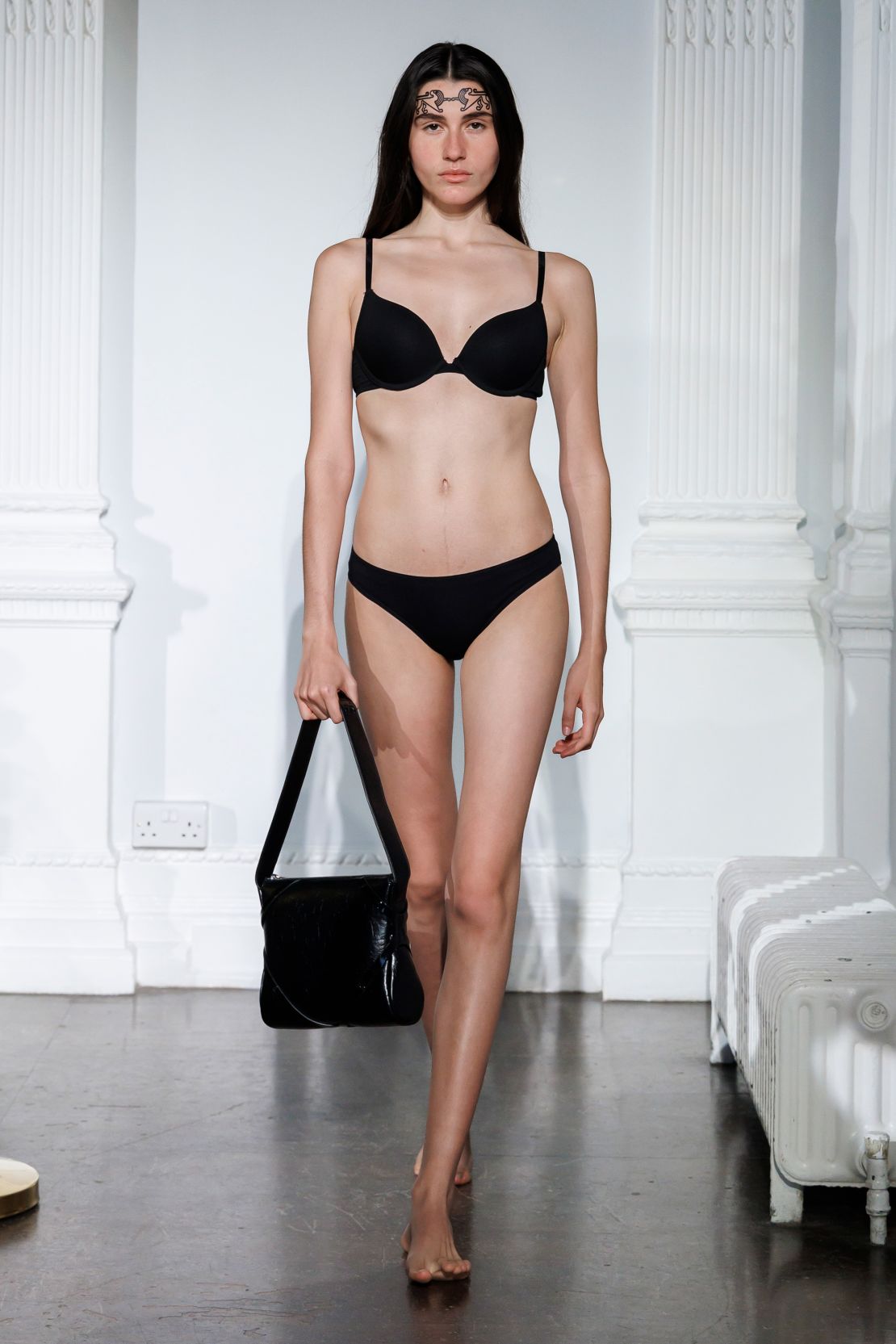
What is sexy these days? Designers this season seemed to be asking the question, and we received a range of answers. There were overt displays of nudity at Puppets and Puppets, where model styling was stripped back — literally — to let the accessories talk; and Adonis-like six packs at Di Petsa, where three runway looks centered on a pair of metallic nipple pasties. At 16 Arlington, fabrics were sheer or constructed from thousands of beads sewn together and models donned bikini tops and glittering or animal printed hotpants. Simone Rocha mused on the mini skirt, which came in the form of giant tutus and a slinky satin slip, while Nensi Dojaka continued her mission of making everything – even an evening gown — look like lingerie.
But sensuality wasn’t all about skin — designers like Aaron Esh offered a new kind of sex appeal, found in slim-cut leather trousers, heeled ankle boots and sheer vests or blouses. Models were kept aloof and alluring in Olsen-twin-sized sunglasses and baseball caps, making the sexiest statement of all: effortlessness.
Redefining ‘Girly’
Girliness has been all the rage this summer as it has taken on a new, more nuanced definition. Reframed as an attitude with many layers and contradictions, girl power has permeated widely throughout culture — from displays of female solidarity at the Olympics (the image of Simone Biles and Jordan Biles bowing down to gold medal winner Rebecca Andrade during their podium presentation, a prime example), to Vice President Kamala Harris’ campaign to become America’s first woman commander in chief.
As is often the case, the trend has seemingly influenced designers too. At the JW Anderson show, where tutus were made of leather, Anderson referenced his sister who, he said, “can get quite girly sometimes, but there’s a toughness, a kind of ownership … I can’t relate but I like the attitude.”
Femininity was both celebrated and challenged at Erdem where the brand’s founder and creative director Erdem Moralıoğlu’s new collection was inspired by queer novel “The Well of Loneliness,” which, for its telling of a love story between two women, was promptly banned after it was first published in 1928. The book’s author, Marguerite Antonia Radclyffe Hall, a lesbian, preferred to go by the name John and often wore men’s clothing. Moralıoğlu’s new designs blended hyper-feminine dress codes, such as lace slip dresses, with sharp Savile Row suiting. Similarly, Chopova Lowena, took its cues from “ferocious feminine muses of America’s past.” Denim, studs and boots with spurs were thrown against ruffles, bloomers, voluminous miniskirts and embroidered flowers.
Let the games begin, again
Call it the Olympic effect, but this season some London designers looked at sportswear through a new lens. Talia Byre’s sparkling lamé rugby shirts and shorts in raspberry and champagne hues reimagined the classic British kit as a partywear; while Labrum staged its show inside Emirates Stadium, not only reprinting Arsenal soccer shirts to include the red, green and white colors of the Pan-African flag — but reworking the jerseys entirely to create a matching two-piece set.
Yuhan Wang dedicated her collection to the world of female boxing, particularly athletes such as Alaia Ali, Jane Couch and Bridget Riley. On display were cycling shorts made entirely of lace, NFL-style shoulder pads adorned with embroidered flowers and, of course, several pairs of boxing gloves. Speaking to CNN after the show, Wang said she wanted to reimagine the meaning of sportswear. “I think in the past sportswear has been based on men. It’s quite functional. But no one thinks about how women want to dress,” she said. “I’m trying to recreate sportswear in a more feminine way.”
All grown up
London has long been known as a free-spirited training ground for fashion’s best and brightest. From Alexander McQueen and Vivienne Westwood to John Galliano and Stella McCartney, the city has a knack for nurturing emerging talent until they reach their full potential. But this season, a sartorial maturity — perhaps driven by economic pragmatism — eclipsed London’s legacy as the industry’s scrappiest fashion capital.
What stole the show at Chet Lo wasn’t an eye-catching array of quirky accessories in candy-colored hues, but a pair of expertly engineered wrap trousers in chocolate brown and stone-gray fabric. Nensi Dojaka bolstered her reputation as lingerie luminary with a business-savvy partnership with Calvin Klein. Relative newcomer Standing Ground’s red carpet-ready gowns were met with critical praise. Even Richard Quinn, known for his subversive fusion of regal silhouettes, classical florals and fetish wear, remained purist. Staged at The Dorchester Hotel, where Hubert de Givenchy held his first UK show in 1955, the collection felt like peeking into a 1950’s debutante’s wardrobe.
To see the best bits of London Fashion Week, keep scrolling.
